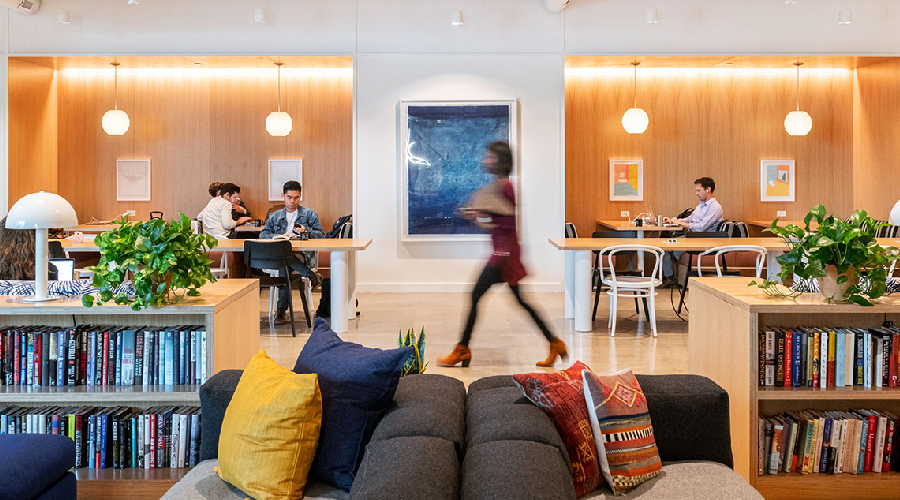1825 Snyder Avenue Charlotte, NC +1 704-676-4089 info@rethinkhomerenos.com

Lighting plays a crucial role in shaping the atmosphere of any space, whether it’s a cozy living room or a bustling office. To begin improving your space's feel, consider the different types of lighting available. Natural light is often the most desirable, so maximize window spaces by using light, airy curtains that allow sunlight to filter in while offering some privacy. For artificial lighting, think about layering your options. A mix of ambient, task, and accent lights can create a well-rounded environment. Ambient lighting provides overall illumination, while task lighting is concentrated on specific areas, like a reading lamp beside an armchair. Accent lighting, on the other hand, highlights unique features such as artwork or architectural details. By varying your light sources, you can enhance the depth and warmth of a room. Don’t forget about dimmers; they give you control over the brightness, allowing you to switch from bright and energizing in the morning to soft and relaxing in the evening. With thoughtful lighting choices, you can drastically improve the comfort and feel of your space, transforming it into a place where you and others can truly feel at ease.
Color temperature is another essential aspect to consider when using lighting to enhance a room. Lights come in various tones, from warm yellows to cool blues, and each can influence how a space feels. For example, warm light, often referred to as “soft white,” creates a cozy and inviting ambiance, perfect for living rooms and bedrooms where relaxation is key. In contrast, cooler light, often labeled as “daylight,” is ideal for workspaces because it promotes alertness and focus. If you can, combine different temperatures in one room to provide versatility. For example, you might use warm lights in seating areas for comfort while keeping cooler lights over desks for productivity. Additionally, decorative fixtures can also contribute to your space's feel. Stylish lamps, chandeliers, or even string lights can add charm and character. Opt for designs that resonate with your personal taste while still serving a functional purpose. When you use color temperature effectively and select beautiful fixtures, lighting transforms not only the mood of your space but also its overall design and style.
Don’t underestimate the power of task lighting in a room. When you’re working on a project, reading a book, or preparing a meal, good visibility is key. By incorporating focused light sources like desk lamps, under-cabinet lights, and bedside lamps, you can ensure that important tasks are easier and more enjoyable. These lighting choices provide the illumination you need while allowing you to keep the ambient lighting softer and more inviting. When setting up such lights, consider their placement carefully. You want to avoid glare and shadows that could make tasks harder rather than easier. Adjustable lamps can be particularly useful since they allow you to direct light exactly where it’s needed. Furthermore, the inclusion of smart lighting can also elevate the functionality of your space. By using smart bulbs and home automation, you can easily switch between different lighting modes depending on your needs. Whether you're hosting a gathering or enjoying a quiet evening in, having the right task lighting can enhance your productivity and comfort, making every space in your home feel more purposeful and enjoyable.
A significant aspect of using lighting to enhance your space is taking advantage of the reflections and shadows created by your choices. Strategic placement of mirrors can amplify natural light and make your space feel larger and brighter. Position mirrors across from windows or light sources to bounce illumination around the room effectively. Additionally, understanding how shadows can affect the feel of a space can be beneficial. Rather than harsh overhead lights, consider softer options that create gentle shadows and add depth. Using a combination of table lamps and wall sconces can help break up the flatness of a room and create interest. When shadows are thoughtfully incorporated, they can evoke a warm, intimate atmosphere. Also, consider how light interacts with colors and textures around your space. Warmer walls may look more inviting when accentuated with softer lighting, while cooler tones can be enhanced with brighter white light to evoke clarity. This interplay of light, shadow, reflections, and colors gives you the opportunity to shape the mood of each room creatively, ensuring every area feels harmonious and alive.
In addition to the types of lighting used, the placement and the use of lighting design can effectively enhance your space's feel. Start by conducting an assessment of what each area of your home needs. In some instances, it may be useful to create zones within a room using different lighting techniques. For instance, in a large living area, you could designate a reading nook with warm, focused lighting while keeping general illumination overhead. This creates distinct atmospheres suited to varying activities within one space. Don’t forget outdoor lighting as well, as it can extend your living area beyond the walls of your home. Properly placed outdoor lights can make your patio or garden welcoming during evening hours. Consider solar path lights for walkways to ensure safety and guide guests while adding charm. Experimenting with colored light bulbs or string lights can also create a playful vibe for gatherings. The key is to think creatively about how lighting can serve both functional and aesthetic needs in your space. By carefully considering placement and design, you can curate an environment that feels personalized, comfortable, and inviting at any hour of the day.